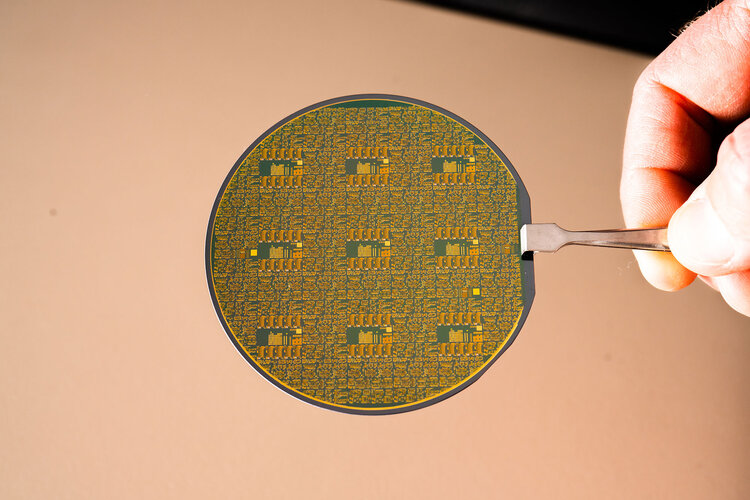
Copernical Team
Wideband Lens for Lunar Rover microscope
 Resolve Optics has received an order from a leading aerospace company to design and supply an optimised wide waveband lens for a multi-spectral microscope required for a Moon exploration mission.
Due for delivery and launch in 2024 - a new solar powered land rover - 'Lunar Vertex' will explore the Reiner Gamma swirl, one of the most distinctive natural features and so-called "magnetic anom
Resolve Optics has received an order from a leading aerospace company to design and supply an optimised wide waveband lens for a multi-spectral microscope required for a Moon exploration mission.
Due for delivery and launch in 2024 - a new solar powered land rover - 'Lunar Vertex' will explore the Reiner Gamma swirl, one of the most distinctive natural features and so-called "magnetic anom A chip off the old block: Sols 3534-3536
 We have been making our way to a large boulder "Ilha Nova Destino" (which from the distance looks remarkably like the Hogwarts Sorting Hat from Harry Potter!) and landed about 3 metres back from the block.
Although we would have loved to get closer, the boulder is as large as the rover (as tall as an SUV) and considerably less stable looking, appearing to be almost perched up on one side.
We have been making our way to a large boulder "Ilha Nova Destino" (which from the distance looks remarkably like the Hogwarts Sorting Hat from Harry Potter!) and landed about 3 metres back from the block.
Although we would have loved to get closer, the boulder is as large as the rover (as tall as an SUV) and considerably less stable looking, appearing to be almost perched up on one side. NASA defers CLPS delivery of VIPER to 2024 to reduce risk
 NASA's Commercial Lunar Payload Services (CLPS) initiative allows rapid acquisition of lunar delivery services from American companies for payloads that advance capabilities for science, exploration or commercial development of the Moon.
Through CLPS, NASA contracted Astrobotic of Pittsburgh to deliver the agency's Volatiles Investigating Polar Exploration Rover (VIPER) to the lunar surfac
NASA's Commercial Lunar Payload Services (CLPS) initiative allows rapid acquisition of lunar delivery services from American companies for payloads that advance capabilities for science, exploration or commercial development of the Moon.
Through CLPS, NASA contracted Astrobotic of Pittsburgh to deliver the agency's Volatiles Investigating Polar Exploration Rover (VIPER) to the lunar surfac Patent approved for space propulsion system poised to transform orbital space logistics
 Orbital logistics and space mining leader TransAstra Corporation has been granted a patent on a solar-thermal rocket engine that will revolutionize the rapidly expanding satellite industry, and accelerate the global space economy.
The company's Omnivore thruster, which powers its Worker Bee space tugs, marks a significant departure from existing rocket propellant systems because it operate
Orbital logistics and space mining leader TransAstra Corporation has been granted a patent on a solar-thermal rocket engine that will revolutionize the rapidly expanding satellite industry, and accelerate the global space economy.
The company's Omnivore thruster, which powers its Worker Bee space tugs, marks a significant departure from existing rocket propellant systems because it operate Dawn Aerospace awarded EU contract for hydrazine-replacement program
 Dawn Aerospace has been awarded euro 1.4 million from the European Commission to help develop its transformative 'green', in-space propulsion technology.
The grant will contribute to Dawn's continued investment in hydrazine-replacement technology. The propulsion technology will have the size and performance of a hydrazine-based system, but without the toxicity, supply chain or regulatory
Dawn Aerospace has been awarded euro 1.4 million from the European Commission to help develop its transformative 'green', in-space propulsion technology.
The grant will contribute to Dawn's continued investment in hydrazine-replacement technology. The propulsion technology will have the size and performance of a hydrazine-based system, but without the toxicity, supply chain or regulatory Mars Express peers into Mars' 'Grand Canyon'

The latest image release from ESA’s Mars Express takes us over two ruptures in the martian crust that form part of the mighty Valles Marineris canyon system.
First spacewalk for Samantha Cristoforetti

On 21 July 2022, ESA astronaut Samantha Cristoforetti will head outside the International Space Station on a spacewalk alongside cosmonaut Oleg Artemyev. It will be Samantha’s first spacewalk, and the first conducted by a European woman.
Feeling the heat from space

With searing temperatures and a string of record highs being smashed across western Europe, the current heatwave is all too apparent. Extreme heat warnings have been issued in several countries including France, Spain and Portugal, and deadly wildfires have forced thousands to flee their homes. The satellite images here are an example of how the crisis is being viewed by satellites orbiting Earth.
From Blu-Ray players to Earth orbit
 Image:
From Blu-Ray players to Earth orbit
Image:
From Blu-Ray players to Earth orbit New collaborative X-ray observatory stands tall as testing begins


